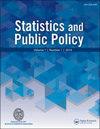一种衡量投票弹性和竞争力的计算方法
IF 1.5
Q2 SOCIAL SCIENCES, MATHEMATICAL METHODS
引用次数: 26
摘要
最近一波对党派不公正划分选区的关注伴随着推动完善或取代管理全国政治重新划分的法律。在几个州的改革努力中,一个共同的因素是纳入了竞争力指标,即根据地区层面的结果在多大程度上发挥作用或可能存在激烈竞争来评估学区计划的分数。在本文中,我们研究了由最近的改革提案推动的几类竞争力指标,然后评估了它们在国会和州参议院层面的大规模地区计划中的潜在结果。这是越来越多的文献使用MCMC技术的一部分,从应用统计到在有效的重新划分方案的背景下制定计划和标准。我们的实证分析集中在五个州——犹他州、乔治亚州、威斯康辛州、弗吉尼亚州和马萨诸塞州——被选来代表一系列的党派属性。我们强调了在创建良好的竞争力指标方面的具体情况困难,并表明优化竞争力可能会对其他党派指标产生意想不到的后果。这些结果表明:(1)避免将详细的度量约束写入长期的宪法改革中;(2)在每个重新划分周期中对真实的地理选举数据进行仔细的数学建模。本文章由计算机程序翻译,如有差异,请以英文原文为准。
A Computational Approach to Measuring Vote Elasticity and Competitiveness
ABSTRACT The recent wave of attention to partisan gerrymandering has come with a push to refine or replace the laws that govern political redistricting around the country. A common element in several states’ reform efforts has been the inclusion of competitiveness metrics, or scores that evaluate a districting plan based on the extent to which district-level outcomes are in play or are likely to be closely contested. In this article, we examine several classes of competitiveness metrics motivated by recent reform proposals and then evaluate their potential outcomes across large ensembles of districting plans at the Congressional and state Senate levels. This is part of a growing literature using MCMC techniques from applied statistics to situate plans and criteria in the context of valid redistricting alternatives. Our empirical analysis focuses on five states—Utah, Georgia, Wisconsin, Virginia, and Massachusetts—chosen to represent a range of partisan attributes. We highlight situation-specific difficulties in creating good competitiveness metrics and show that optimizing competitiveness can produce unintended consequences on other partisan metrics. These results demonstrate the importance of (1) avoiding writing detailed metric constraints into long-lasting constitutional reform and (2) carrying out careful mathematical modeling on real geo-electoral data in each redistricting cycle.
求助全文
通过发布文献求助,成功后即可免费获取论文全文。
去求助
来源期刊

Statistics and Public Policy
SOCIAL SCIENCES, MATHEMATICAL METHODS-
CiteScore
3.20
自引率
6.20%
发文量
13
审稿时长
32 weeks
 求助内容:
求助内容: 应助结果提醒方式:
应助结果提醒方式:


